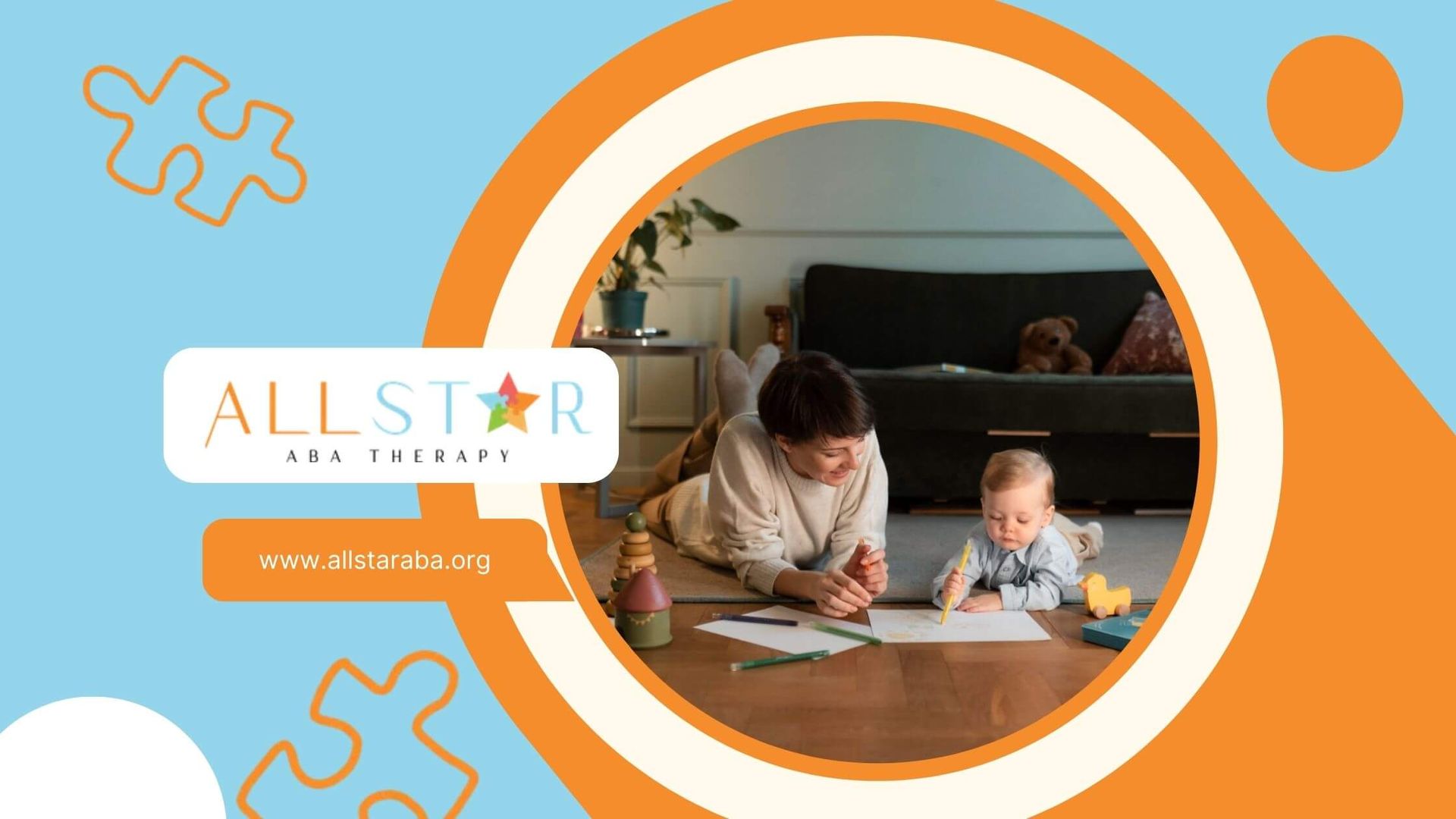New Paragraph
Empowering Knowledge: Grasping the Essence of What Autism Is
Understanding Autism Spectrum Disorder
Autism Spectrum Disorder (ASD) is a complex, multifaceted developmental disability with a wide range of manifestations that affect individuals differently. The understanding of ASD has evolved over the years, with current perspectives emphasizing its impact on social interaction, communication, behavior, and learning.
Defining Autism
Autism is a lifelong developmental disability characterized by challenges in social interaction, communication, and the presence of repetitive behaviors and restricted interests. It is described as a "spectrum" disorder because the intensity and combination of symptoms can vary widely among individuals, with some requiring significant support in their daily lives, while others may live independently.
The Spectrum of Symptoms
The spectrum of symptoms associated with ASD includes but is not limited to, difficulties in understanding and using nonverbal communication, challenges in developing and maintaining relationships, and deficits in social-emotional reciprocity. Additionally, individuals with ASD may exhibit restrictive and repetitive behaviors, such as repetitive movements, insistence on sameness, and highly restricted interests. For a deeper look into the characteristics of autism, one can explore various behaviors and traits associated with the condition.
Prevalence in the Population
Autism affects all ethnic and socioeconomic groups and is estimated to impact 1 in 54 children in the United States, according to recent studies. The condition is about 4 times more common among boys than among girls, with a ratio of approximately 4 boys to 1 girl.
| Gender | Prevalence Ratio |
|---|---|
| Boys | 1 in 42 |
| Girls | 1 in 189 |
Understanding ASD is the first step toward effective intervention and support. Early identification and early intervention for autism can significantly enhance the quality of life for individuals with the disorder and their families. With appropriate resources and therapies, such as ABA therapy for autism, individuals can develop skills and coping mechanisms that help manage the challenges associated with ASD.
Early Signs and Diagnosis
Proper understanding and timely recognition of Autism Spectrum Disorder (ASD) are essential for facilitating early intervention and improving life outcomes. This section examines the early indicators of autism, the significance of timely intervention, and outlines the diagnostic process.
Recognizing Early Indicators
Early signs of autism can manifest in children as young as 2 years old. Parents and caregivers should be alert to the early indicators of autism, which may include lack of eye contact, delayed speech development, limited interest in social interactions, repetitive behaviors, and resistance to changes in routine or environment. Although most children are diagnosed with autism between the ages of 4 and 5, the condition can be reliably identified much earlier.
Monitoring developmental milestones is crucial in recognizing the early signs of autism. If parents or caregivers notice any signs of developmental delays, they are encouraged to consult a healthcare professional for further evaluation. Early detection is linked to accessing early intervention services, which can significantly enhance the child's development and quality of life.
The Importance of Early Intervention
Early identification of autism opens the door to early intervention, which has been associated with improved outcomes for individuals with ASD. Research indicates that the earlier a child with autism starts receiving support and therapy, such as ABA therapy for autism, the better their progress in key areas of development, including communication, social skills, and adaptive behaviors.
Early intervention programs are tailored to address the specific needs of the child and can involve a range of specialists, from speech therapists to occupational therapists, all working in tandem to help the child develop essential skills. The goal of these programs is not only to improve current functioning but also to establish a strong foundation for future learning and growth. Families can learn more about these programs and their benefits through resources on early intervention for autism.
The Diagnostic Process
The process of diagnosing autism involves a comprehensive evaluation by a team of multi-disciplinary professionals, which may include developmental pediatricians, child psychologists, and neurologists. The evaluation typically includes a combination of behavioral assessments, developmental screenings, and parental interviews to understand the child's behavior and development.
Diagnosis is based on the criteria outlined in the Diagnostic and Statistical Manual of Mental Disorders (DSM-5), which requires persistent deficits in social communication and social interaction across multiple contexts, as well as restricted, repetitive patterns of behavior, interests, or activities.
The diagnostic process can be complex and may take time, but it is an important step in understanding the characteristics of autism and ensuring that children receive the appropriate interventions to support their needs. It is important for families to work closely with healthcare providers throughout the diagnostic process to ensure that all aspects of the child's development are considered.
Causes and Contributions
Understanding the underlying causes of Autism Spectrum Disorder (ASD) is vital for those impacted by the condition, including families and professionals. While the precise etiology remains elusive, current research points to a blend of genetic and environmental factors that influence the development of ASD.
Genetic and Environmental Factors
The origins of Autism Spectrum Disorder are not attributed to a singular cause. Research indicates that a person's genes can interact with environmental elements to affect development in ways that lead to ASD. This interaction may involve a range of factors, including advanced parental age, certain genetic conditions, and low birth weight.
Furthermore, studies suggest that there might be multiple genes involved, rather than one single gene causing the disorder. This complexity makes it difficult to pinpoint the exact genetic contribution, but it is clear that genetics play a significant role in the likelihood of an individual developing ASD.
Environmental factors, although less understood, are also believed to play a role. These may include aspects such as prenatal exposure to certain drugs or chemicals, complications during birth, or other non-genetic factors that could potentially affect brain development.
| Factor | Association with ASD |
|---|---|
| Advanced Parental Age | Increased likelihood |
| Certain Genetic Conditions | Increased likelihood |
| Low Birth Weight | Increased likelihood |
Common Misconceptions
There are numerous misconceptions about the causality of autism that can lead to confusion and stigma. One of the most persistent myths is that vaccines cause autism. This theory has been extensively debunked by scientific research and major health organizations, including the CDC, which assert that vaccines do not cause ASD.
Another common fallacy is that ASD is a result of poor parenting or social circumstances. However, ASD is a neurological condition that is not caused by upbringing or social environments.
It is essential to challenge these misconceptions and spread accurate information about the causes of ASD. Proper understanding can foster empathy, support, and effective interventions, such as the role of ABA therapy for autism, which is a key treatment approach. Early recognition of autism symptoms in children and subsequent early intervention for autism can significantly improve outcomes for individuals with ASD. For more details on the characteristics and management of autism, please refer to our in-depth article on characteristics of autism.
ABA Therapy in Baltimore
Applied Behavior Analysis (ABA) is a significant therapeutic strategy for individuals with Autism Spectrum Disorder (ASD) in Baltimore. This section explores the role ABA plays in autism therapy, the outcomes it can yield, and how to find ABA services in the area.
Role of ABA in Autism
ABA stands for Applied Behavior Analysis, which is an evidence-based therapy widely recognized for its effectiveness in treating children with autism. It focuses on improving socially significant behaviors and reducing behaviors that may be harmful or affect learning. ABA operates on the principles of learning theory, using positive reinforcement and breaking down complex tasks into smaller, more manageable steps.
ABA therapy has been shown to help individuals with autism to:
- Acquire new skills
- Enhance communication and social interactions
- Reduce challenging behaviors
ABA's role is not just to address the characteristics of autism but to support the individual in reaching their full potential and enhancing their quality of life. The therapy is tailored to meet the individual needs of each person with autism and can be provided in various settings including homes, schools, and clinics.
ABA Therapy Outcomes
ABA therapy outcomes are measurable and aim to improve the overall development of individuals with autism. Research and practice have demonstrated the effectiveness of ABA therapy in:
- Improving communication skills
- Enhancing social skills
- Fostering adaptive behaviors
- Decreasing problem behaviors
These outcomes are often achieved through consistent and individualized interventions carried out by trained professionals. The progress made through ABA therapy can lead to significant improvements in daily living, educational settings, and eventual integration into the community.
Finding ABA Services
Locating ABA services in Baltimore can begin with local autism support organizations and healthcare providers or by reaching out directly to behavior analysts who specialize in ABA therapy. For families and individuals seeking ABA therapy, it is essential to ensure that the services are provided by certified professionals with experience in autism care.
Resources for finding ABA services include:
- Local directories of healthcare providers
- Autism support groups and networks
- Recommendations from pediatricians or educational institutions
It's also advisable to check with insurance providers to understand coverage options for ABA therapy. By connecting with the right resources, individuals with autism and their families can find comprehensive and effective ABA therapy options in Baltimore.
For more information on ABA therapy and how it can support individuals with autism, please visit our detailed page on ABA therapy for autism. Additionally, those interested in the diagnostic process and early indicators of autism can read more on autism symptoms in children and the importance of early intervention for autism.
Managing Autism: Approaches and Interventions
Managing Autism Spectrum Disorder (ASD) involves a range of approaches and interventions designed to address the characteristics of autism and support individuals with ASD in achieving the best possible outcomes. These strategies can be tailored to each person's unique needs and typically include a combination of evidence-based treatments, complementary therapies, and life-long management plans.
Evidence-Based Treatments
Evidence-based treatments for autism are grounded in scientific research and have been proven to be effective in improving the symptoms and functioning of individuals with ASD. One of the most prominent evidence-based therapies is Applied Behavior Analysis (ABA).
Applied Behavior Analysis (ABA)
ABA therapy is a highly structured approach that uses reinforcement strategies to encourage positive behaviors and reduce those that may be harmful or interfere with learning. According to the
CDC, ABA is one of the most widely used therapies for children with autism, and it has a strong track record of success.
| Therapy Type | Description | Outcome Measures |
|---|---|---|
| ABA Therapy | Behavioral intervention focused on skill development and behavior modification. | Improved communication, social skills, and learning. |
For those in Baltimore seeking ABA services, ABA therapy for autism can provide more information on finding local practitioners and understanding the role of ABA in autism treatment.
Complementary Therapies
Complementary therapies can be used in conjunction with evidence-based treatments to support individuals with autism. These may include:
- Occupational Therapy: Helps improve daily living skills and motor functions.
- Speech Therapy:
Aims to enhance communication abilities.
- Physical Therapy: Focuses on developing gross motor skills and coordination.
- Sensory Integration Therapy: Assists individuals in processing sensory information more effectively.
While these therapies are not a replacement for primary treatments like ABA, they can significantly contribute to an individual's overall development and quality of life.
Life-Long Management Strategies
Autism is a life-long condition, and as such, it requires ongoing management strategies that evolve as the individual grows. These strategies include:
- Educational support: Tailored learning plans to address individual learning styles.
- Transition planning: Helping individuals with ASD prepare for changes, such as moving from school to work environments.
- Social skills training: Providing opportunities to develop and practice social interactions.
Early intervention is critical, and early intervention for autism can provide the necessary support and resources for children showing autism symptoms in children. The sooner a child with autism receives help, the better their progress in areas of need.
Managing ASD is a continuous process that adapts to the changing needs of the individual. By utilizing a combination of evidence-based treatments, complementary therapies, and life-long management strategies, individuals with autism can lead fulfilling lives. Parents, family members, ABA therapists, and educators can work together to ensure that each person with autism receives the support and guidance they need to thrive.
Autism in Different Demographics
Autism Spectrum Disorder (ASD) affects individuals across all demographics. However, certain patterns have been observed in the prevalence and characteristics of autism among different gender groups, as well as across various ethnic and socioeconomic backgrounds. Understanding these differences is crucial for tailoring interventions and support services, such as ABA therapy for autism, to meet the diverse needs of those affected by ASD.
Gender Differences in Autism
Research shows a marked gender disparity in autism diagnoses. Boys are significantly more likely to be diagnosed with autism than girls, with the Centers for Disease Control and Prevention (CDC) reporting that boys are four times more likely to be diagnosed with ASD compared to girls. This ratio is consistent with Autism Speaks, which states that approximately 4 boys are diagnosed for every 1 girl.
| Gender | Likelihood of Autism Diagnosis |
|---|---|
| Boys | 4x more likely than girls |
| Girls | Less likely to be diagnosed |
These figures underscore the importance of awareness and understanding of how autism manifests differently across genders. It has been suggested that girls might exhibit less obvious autism symptoms, potentially leading to underdiagnosis or misdiagnosis. Recognizing these nuances is essential for ensuring that all individuals receive the early intervention and support they need.
Ethnic and Socioeconomic Considerations
Autism does not discriminate based on race, ethnicity, or socioeconomic status. The National Institute of Mental Health (NIMH) asserts that individuals of all backgrounds can be diagnosed with ASD. Autism Speaks echoes this sentiment, indicating that autism affects all ethnic and socioeconomic groups equally.
Despite the overall equal prevalence, disparities can exist in the age at diagnosis and access to healthcare services, which may be influenced by socioeconomic factors. Recognizing and addressing these disparities is vital for the implementation of effective support and therapeutic interventions, such as ABA therapy, which is widely regarded as a beneficial approach for individuals with ASD.
| Factor | Impact on Autism Diagnosis and Support |
|---|---|
| Ethnicity | No influence on prevalence, potential disparities in diagnosis age and healthcare access |
| Socioeconomic Status | Can affect access to diagnostic services and interventions |
Conclusion
In summary, while autism affects individuals regardless of gender, ethnicity, or socioeconomic status, certain demographic patterns have been observed in the diagnosis and management of ASD. It is crucial that these factors are considered to provide equitable care and support to all affected individuals. For those seeking ABA therapy in Baltimore or other regions, being aware of the unique characteristics of autism within different demographics can optimize treatment outcomes and improve quality of life.
At All Star ABA, we are committed to providing equitable, personalized care for every child. Our in-home ABA therapy in Maryland and Virginia is designed to meet the unique needs of diverse communities.
Ensure your child receives the support, resources, and opportunities they deserve to thrive. Contact us today!
Frequently Asked Questions
What is the current prevalence of autism in children?
According to the CDC, about 1 in 36 children in the U.S. is diagnosed with Autism Spectrum Disorder (ASD). This highlights the importance of awareness and access to early intervention services.
Why are autism diagnosis rates different across demographics?
Factors such as healthcare access, cultural differences in recognizing symptoms, and socioeconomic barriers can influence diagnosis rates. Addressing these disparities ensures equitable care for all families.
How does ABA therapy support children from diverse backgrounds?
ABA therapy is individualized and evidence-based, meaning it can be tailored to each child’s cultural, linguistic, and developmental needs. This flexibility helps improve outcomes across diverse communities.
SOURCES:
https://www.cdc.gov/ncbddd/autism/treatment.html
https://www.autismspeaks.org/what-are-symptoms-autism
https://www.nimh.nih.gov/health/topics/autism-spectrum-disorders-asd
Need Support?
We're Here to Help!
Our experienced team is ready to assist you. Reach out today to discuss how we can support your child's development and well-being.
Get started with expert ABA therapy today.








